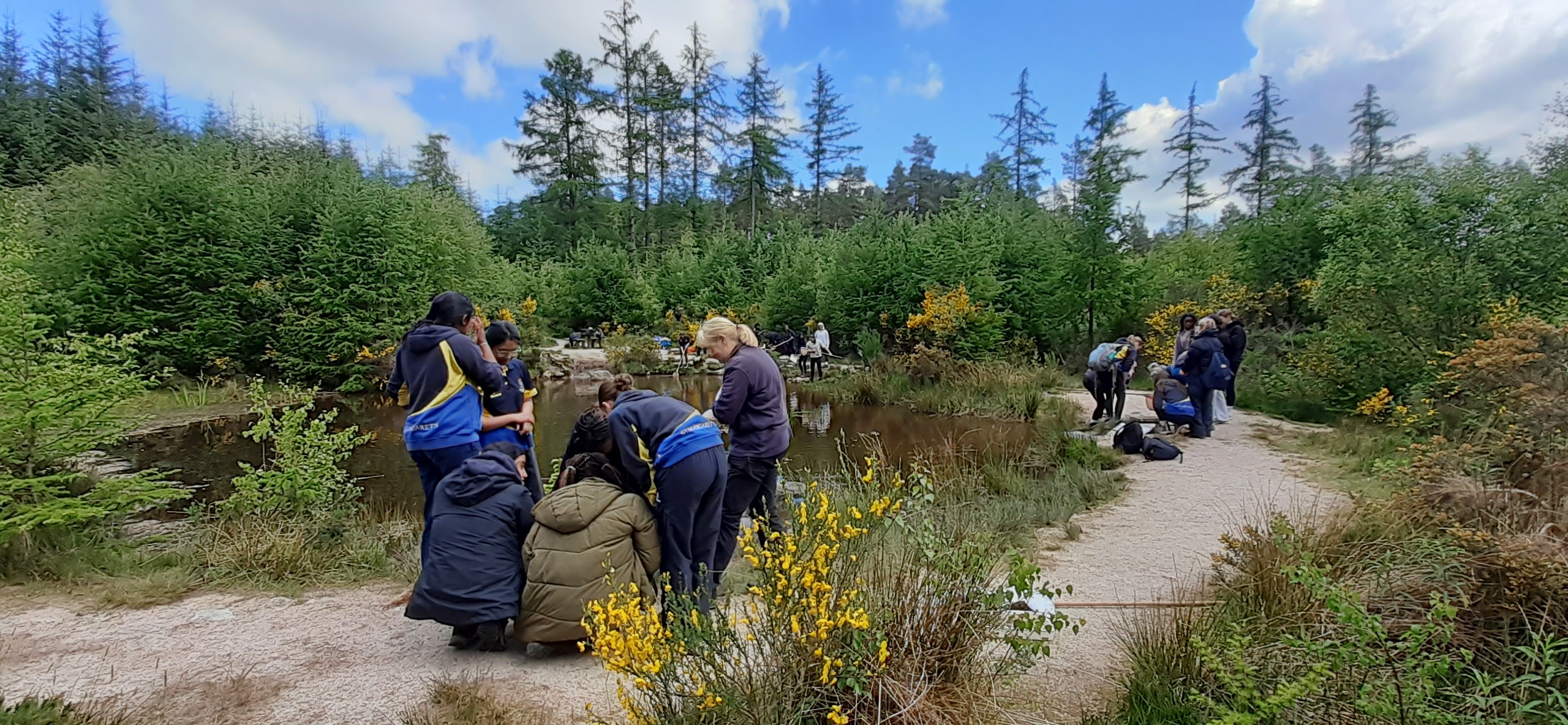
Hands-on fieldwork plays a crucial role in building scientific curiosity and confidence in young learners. Experiences outside the classroom help pupils to see themselves as scientists in the real world, offering opportunities to develop practical skills, teamwork and critical thinking outside the classroom. These types of enriching activities are especially powerful in encouraging girls to pursue further study and careers in STEM, as they see how their classroom learning translates into meaningful, real-world application.
Following our National 5 unit 3 work on Ecology where we have been learning about how to monitor the distribution of organisms in ecosystems, IIIS biology spent the day with Garioch Ranger Alison Sutherland at the Bennachie Centre on Tuesday. Alison had set up several Longworth traps and pitfall traps to sample the small mammal and invertebrate populations. Whilst the traps were empty, there was evidence that several had been occupied by voles which are small enough to escape the trap for welfare reasons. The pitfalls yielded some millipedes. We then investigated the pond for indicator species, and found several newts at different stages of development, small diving beetles and larvae. At a pH of 4.5, the water is acidic from the peaty soil and these sensitive species indicate very low levels of pollution. Alison showed us how larger species are sampled using the trail camera, and we saw footage of badgers, roe deer and jays which had visited the area under the bird feeder in the past week. We then put the theory we had learned about quadrat sampling into practice to compare the ground cover between the forested and recently felled areas, just in time for the breeze to drop and the midges to come out!
To complement our work on the effect of nitrates on waterways and the school's focus on SDG 6 Clean Water and Sanitation, we invited Craig Christie and Paul Hastie from Scottish Water to explain how our drinking water is collected and treated. Just this week we have learned from the news that Scottish consumers have a higher daily water usage than those in Yorkshire, so learning how precious water is as a resource is timely. Craig told us the history of water supply in Aberdeen, from the Loch in Loch Street to now extracting water from the river Dee, and pumping it from there around the Shire all the way up to Rhynie. Paul explained demonstrated the stages of water treatment including initial filtering, coagulation to remove dissolved organic compounds, micro filtering to remove harmful microbes, and then how the water is chlorinated and pH balanced to ensure it remains microbe-free and non-corrosive to the pipes before reaching our homes. Craig and Paul opened our eyes to how much work and cost is involved in treating and pumping our water, and how important this is to keeping us safe compared with countries which don't have access to clean water. We have all estimated our daily water use, and will be thinking about how to reduce this going forward.
Daffodil DNA STEM Partner lab
Dr Ali Roberts, plant cell imaging scientist at the James Hutton Institute Dundee, visited school to deliver a fun laboratory session on investigating plant pigments. The DaffDNA girls and some IIIS biologists learned about the complex terminology used to describe flower anatomy, and then got to observe and apply some of this learning to a huge variety of different flowers. Once we had looked at their structures, we ground and dissolved the petals in ethanol and investigated their solubility in oil and water, and how they respond to changes in pH. The result was a beautiful spectrum of colours! We are collating our data from this lab, and will take it to JHI in Dundee in June to use the powerful microscopes to visualise the cellular structures where the pigments are stored, and make connections with our results.